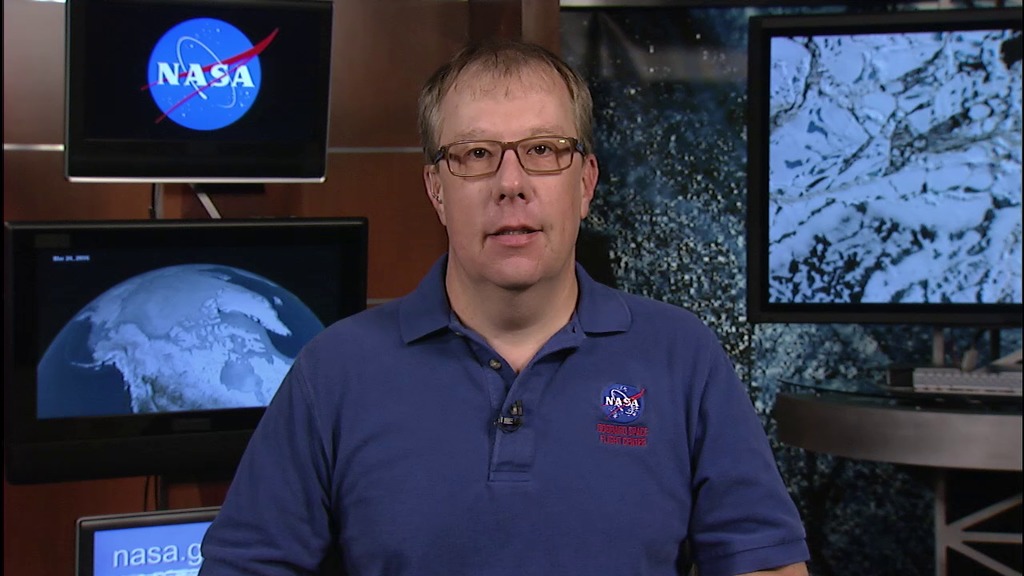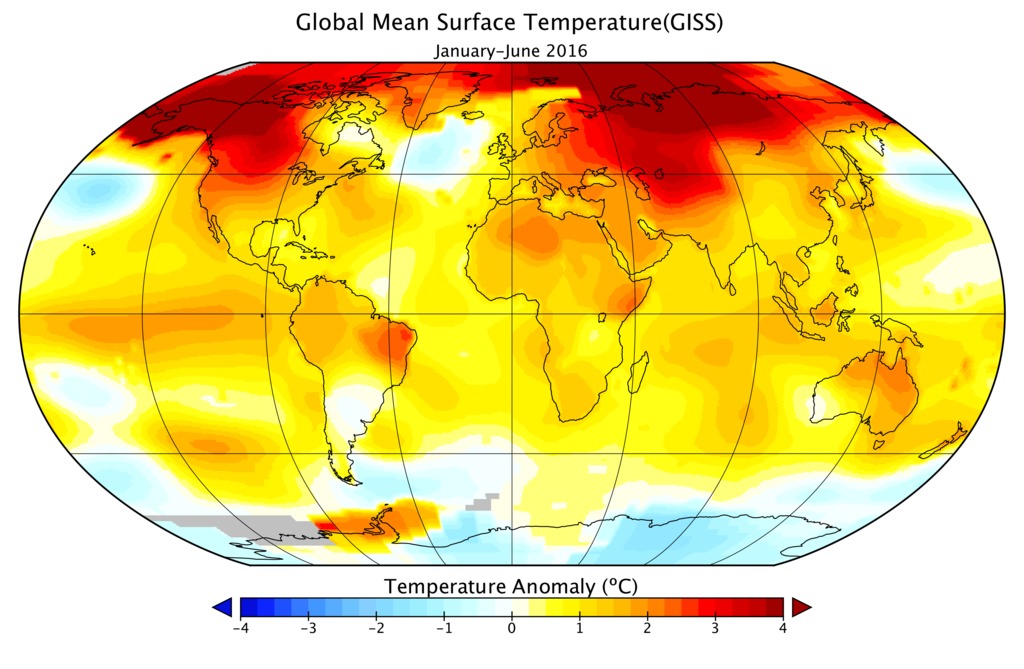Record-Breaking Climate Trends 2016 – Rising Temperatures and Shrinking Sea Ice
Two key climate change indicators have broken numerous records through the first half of 2016, according to NASA analyses of ground-based observations and satellite data. Each of the first six months of 2016 set a record as the warmest respective month globally in the modern temperature record, which dates to 1880. Meanwhile, five of the first six months set records for the smallest monthly Arctic sea ice extent since consistent satellite records began in 1979. NASA researchers are in the field this summer, collecting data to better understand our changing climate.
Music: Hidden Files by Sam Dodson [PRS]
Two key climate change indicators have broken numerous records through the first half of 2016, according to NASA analyses of ground-based observations and satellite data. Each of the first six months of 2016 set a record as the warmest respective month globally in the modern temperature record, which dates to 1880. Meanwhile, five of the first six months set records for the smallest monthly Arctic sea ice extent since consistent satellite records began in 1979. NASA researchers are in the field this summer, collecting data to better understand our changing climate.
While these two key climate indicators have broken records of late, NASA scientists said it is more significant that global temperature and Arctic sea ice are continuing their decades-long trends of change. Both trends are ultimately driven by rising atmospheric concentrations of heat-trapping carbon dioxide and greenhouse gases as a result of fossil fuel burning and deforestation. These rising concentrations directly cause warming of the atmosphere and ocean, which in turn induce sea ice melt.
NASA tracks temperature and sea ice as part of its effort to understand the Earth as a system and to understand how Earth is changing. In addition to maintaining a fleet of 20 Earth-observing satellite missions, NASA also sends researchers around the globe to investigate different facets of the planet at closer range. Right now, NASA researchers are working across the Arctic to better understand both the processes driving increased sea ice melt and the impacts of rising temperatures on Arctic ecosystems.
Dos indicadores clave del cambio climático han roto numerosos récords durante la primera mitad del 2016, según un análisis de la NASA de datos basados en observaciones tomadas desde tierra y desde satélites. Cada uno de los primeros seis meses del 2016 estableció el récord de ser el mes más caluroso a nivel global en el registro de las temperaturas, el cual empezó en el año 1880. Al mismo tiempo, cinco de los seis primeros meses del 2016 presentaron niveles mínimos de extensión mensual del casquete de hielo marino ártico. Este verano, investigadores de la NASA están llevando a cabo trabajo de campo para recopilar datos que nos ayudaran a comprender nuestro cambiante clima.
Music: Hidden Files by Sam Dodson [PRS]
Credits
Please give credit for this item to:
NASA's Goddard Space Flight Center
Some footage compliments of Sander Veraverbeke, Vrije Universiteit Amsterdam.
-
Producer
- Matthew R. Radcliff (USRA)
-
Editor
- Kathryn Mersmann (Intern)
-
Animator
- Trent L. Schindler (USRA)
-
Writers
- Kathryn Mersmann (Intern)
- Maria-Jose Vinas Garcia (Telophase)
- Patricia C. Flores (Intern)
Release date
This page was originally published on Tuesday, July 19, 2016.
This page was last updated on Wednesday, May 3, 2023 at 1:48 PM EDT.

